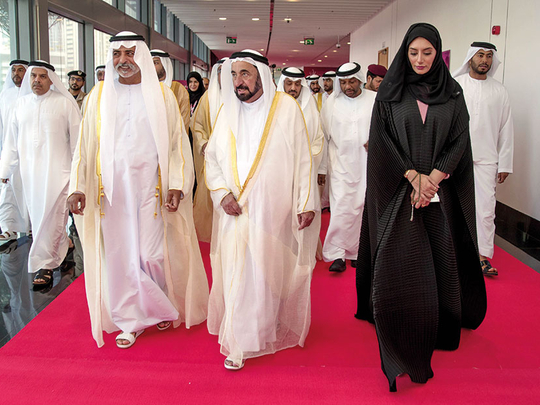
Sharjah: With approximately 70 per cent of its five billion customers being women, Procter & Gamble (P&G) says it has a strong business case to increase the number of women-owned and operated businesses in its supply base.
That supply base, or the amount that P&G spends each year procuring its products, amounts to around $40 billion (Dh147 billion), according to Andy Butler, associate director of supplier citizenship.
P&G’s supplier citizenship agenda, established in 2016, seeks to improve the ratio of women and minority-owned and operated businesses which it purchases products from.
“Today, consumers want to know the company behind the brands they trust,” Butler said, adding: “A gender equal world is a better world for everyone.”
But this is about more than just positive PR, according to Butler.
“[There are] two business reasons. Supplier diversity is a business strategy,” he said.
Firstly, Butler said, internal studies at P&G clearly show that women-owned businesses in the United States deliver better performance results than the average.
“The idea that [women-owned businesses] are more responsive, they deliver better performance, they deliver better cost, they deliver better ideas,” he said, “plays out in a quantitative way in our performance evaluations.”
With women making up such a large segment of its consumer-based, P&G has another reason to improve the diversity of its supply base: If the fast-moving consumer goods (FMCG) giant doesn’t invest in women, it can’t expect women to buy its products.
“If half the world are women, they are the ones buying our products, and they need to be able to have the money to buy our products, if we’re not investing in them, then from a macroeconomic level we can’t expect to grow with that consumer base,” Butler said.
P&G, whose brands include Ariel laundry detergent, Crest toothpaste, Downy fabric softener, and Head & Shoulders shampoo, has a network of over 50,000 suppliers around the world. In the US, it currently counts 16 per cent of its supplies from women or minority-owned and operated businesses, one of the highest ratios of any company. It says it spends over $1 billion annually in the US with women-owned companies alone.
Globally, that number is a lot lower.
Butler said that they would like for women-owned companies to eventually constitute 5 per cent of their global spend.
In the meantime, however, P&G announced on Monday that they aim to source $100 million from women-owned businesses across the developing world over the next three years.
But that doesn’t mean simply giving preferential treatment, Butler said.
“We don’t use different criteria when we source from women-owned businesses. We don’t say, ‘Hey, because you’re part of our supplier diversity programme we’ll accept different payment terms, or a 5 per cent higher price, or a 10 per cent worse performance,’” Butler said.
“They’re going to win the business on their own ability to compete,” he added.
Advertising a key battlefield
Procter & Gamble (P&G), the world’s largest advertiser, is attempting to fight for gender equality through its advertising, a senior company executive said on Monday.
As part of its corporate citizenship push, launched in 2016, P&G has earmarked its advertising as a key battlefield in combating negative gender stereotypes.
They are doing this by simply “calling [gender inequality] out. We want to drive gender equality and we want to drive diversity and inclusion in advertising,” said Andy Butler, associate director of supplier citizenship.
That means also holding the company’s “advertising agency partners accountable” too, Butler added.
Last year, the consumer product giant spent $2.4 billion (Dh8.81 billion) on advertising in the US according to Kantar Media, making it the country’s biggest advertiser.
“It goes beyond doing no harm. We have to shift from doing no harm, to doing some good. It’s not a question of whether we are reinforcing gender stereotypes, but rather a question of whether or not we are breaking gender stereotypes down,” he said.
Butler offered an example: “A proactive way of doing this might be to intentionally include a woman in a role that she wouldn’t typically be seen as having in this commercial.”
He added that this mindset was filtering through to the company’s creative partners at the branding and advertising levels, allowing them to be take the lead and set a more positive and sustainable tone for P&G’s adverts.











